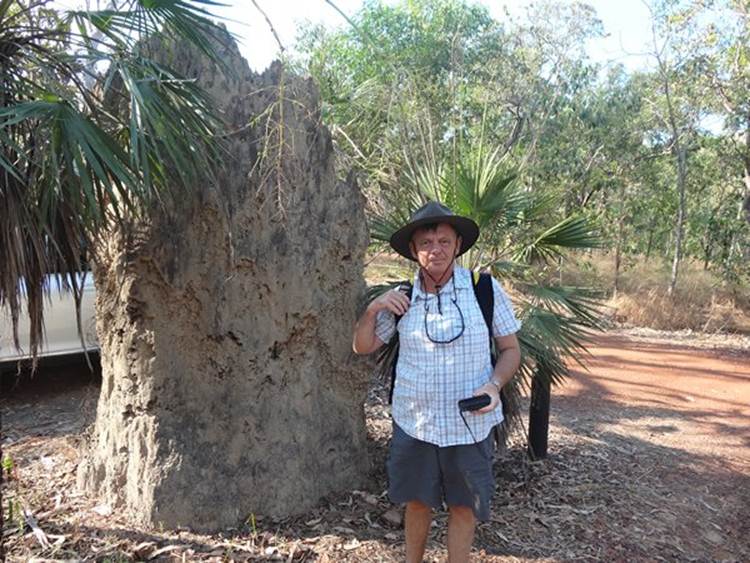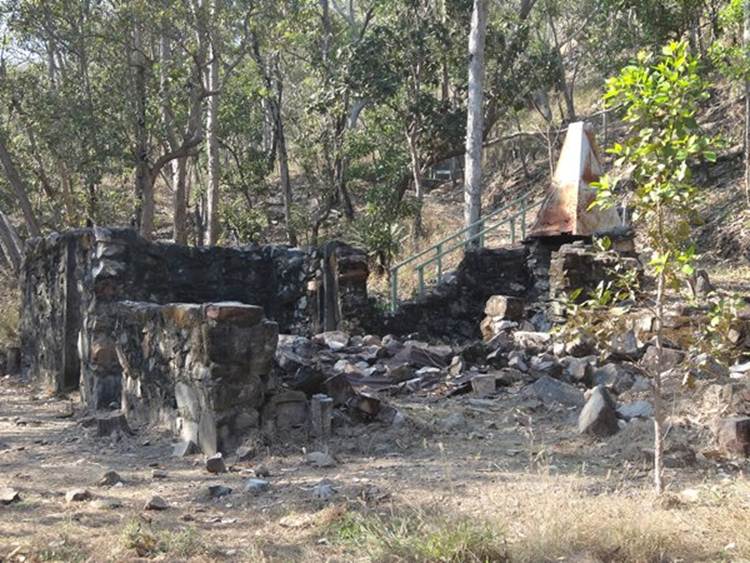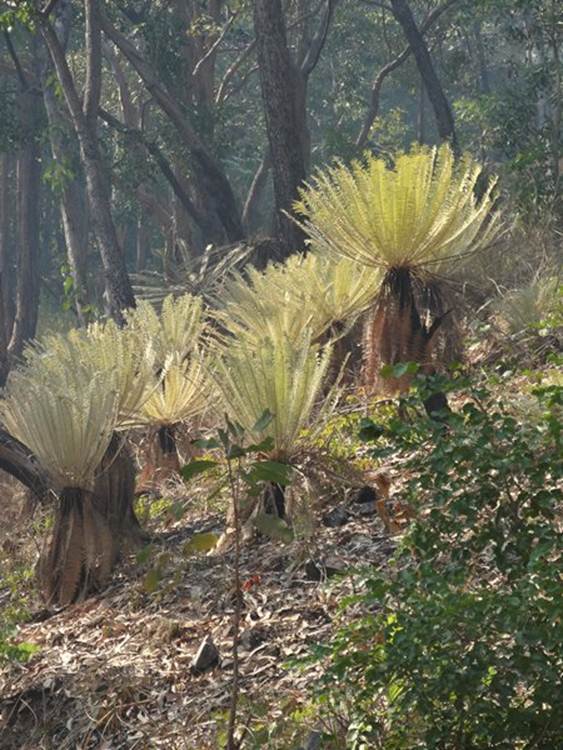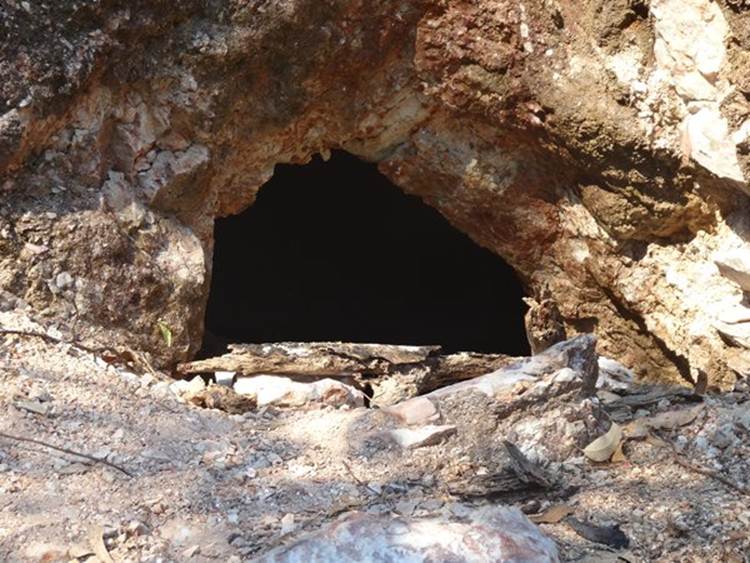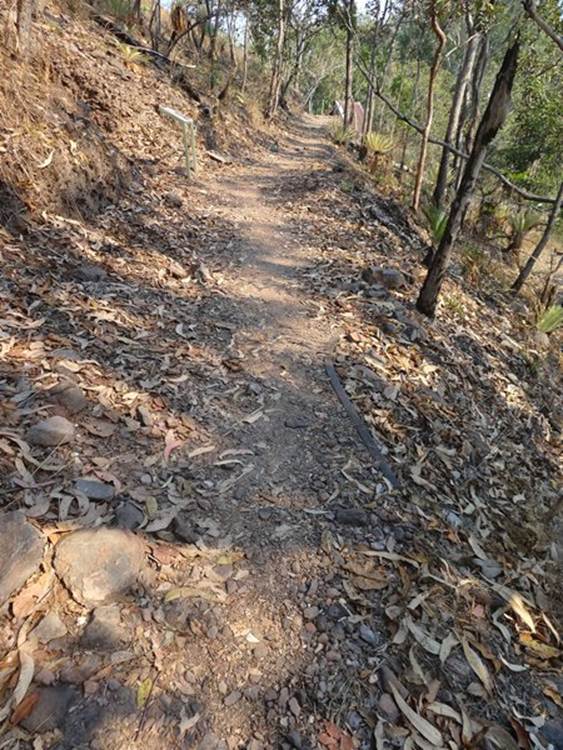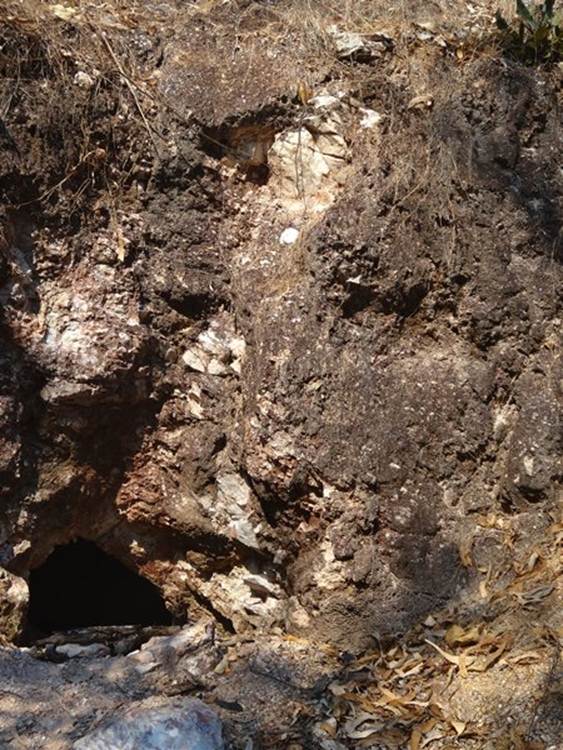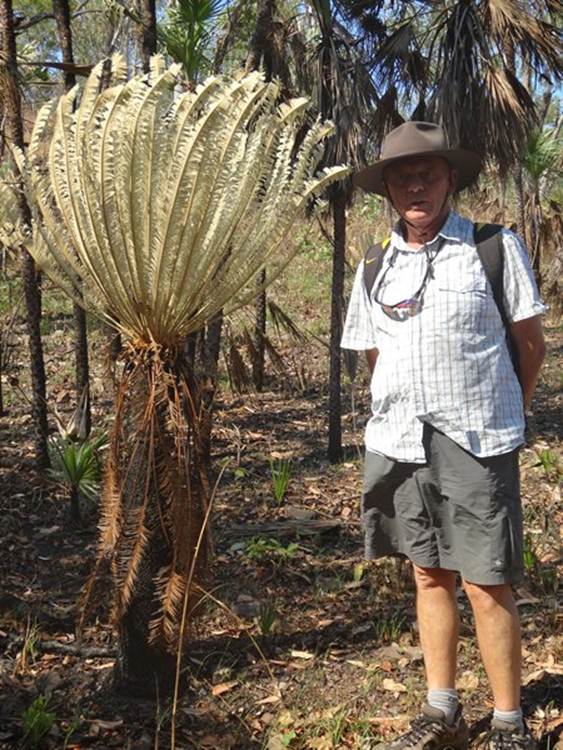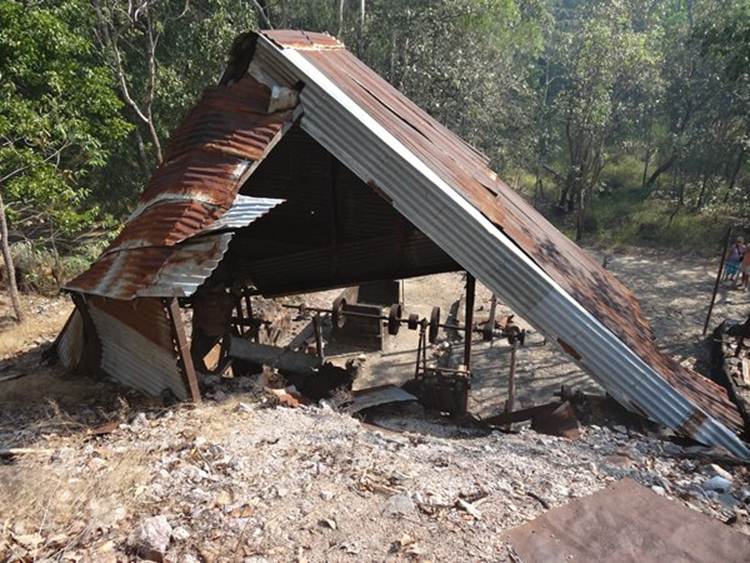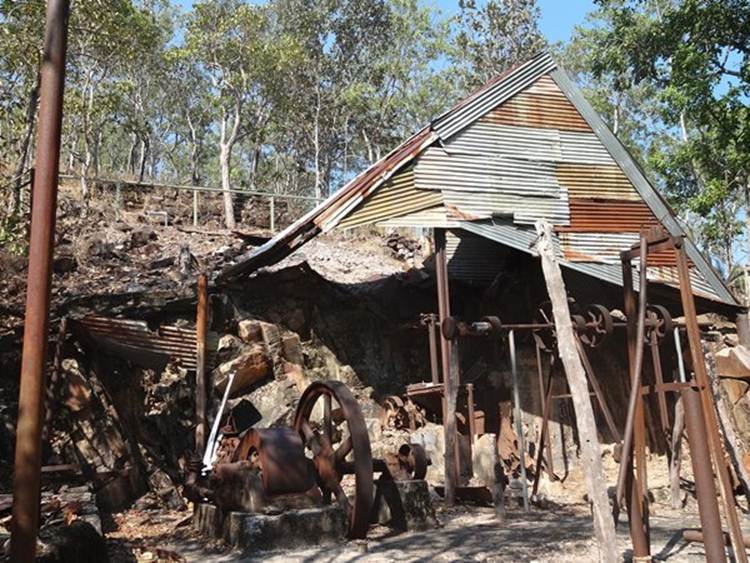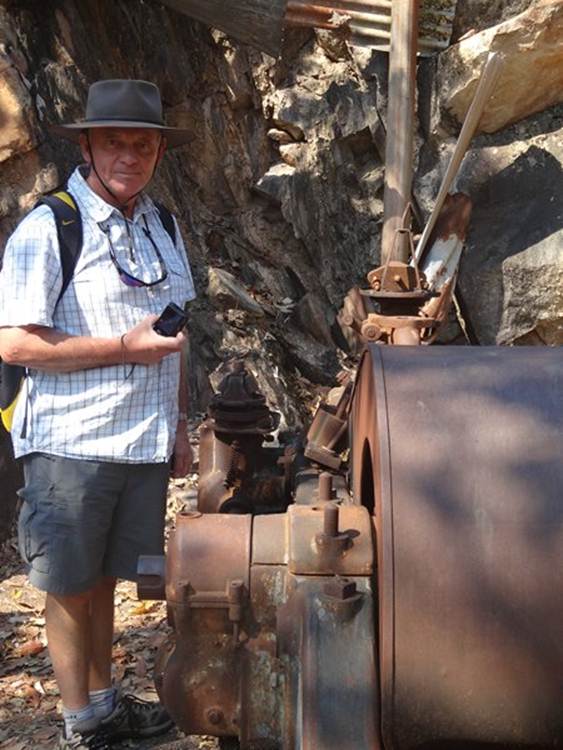Litchfield National Park - Bamboo tin mines

Position 13 07.62S 130 39.28E We are staying at the Litchfield Safari Camp – big mistake. I’ve decided to set up a How clean where you amenities or Rate your Site blog. Did you have to queue for the loo? Did the loo flush? Was there toilet paper? Was there soap stains in the shower? Was there mould around the sink? Did they smell? Where there layers of visible dirt/dust? All yes to Litchfield Safari Park. Wangi Falls campground is just down the road and the showers and toilets there are fabulous compared to these. Anyway after a disturbed night we went on a ranger guided walk to Bamboo tin mines. Paul beside a small termite mound at the car park.
The walk was supposed to last for an hour. He left after about 30 mins due to wild bush fires. A bit of ash has just floated down the side of the computer screen. Back to the tin mine workings. This used to be kitchen and some accommodation. They used cypress pine and rock, and sand and gravel for cement. The floors were made out of crushed termite mounds.
Tin was discovered here in 1906. How I wanted to know. We are in the back of beyond, and a prospector just came meandering through? The ranger didn’t know. In 1941, three blokes brought the leasehold and worked the mine up to the late 1950s. Some of the miners married aboriginal ladies and an aboriginal camp was set up a few miles away. Presumably their children were not part of the lost generation. During the 40s, 50s and 60s aboriginal children of mixed race were taken away from their families and sent to schools and missions far from their homes. You can guess what sort of experience most of them had there. We are back in cycad country.
Back to the riveting mines, this is one of the mine shafts. Seasonal rains were a handicap here because, not only did the shafts deteriorate as the water seeped in, but the moist air was heavy with quartz dust and silica. Both affecting the lungs and causing silicosis. When the rains came the miners were often completely cut off from supply routes etc. by swollen rivers and flooded plains. The mine workers (Europeans and aboriginal) began to show signs of silicosis. Of the three original blokes who took on the leasehold, two died. The disused mineshafts do have a use though, as wildlife refuges. There are at least five species of bat here, as well as frogs, geckos and snakes.
The set season of 1951 was a hum dinger and the mine shafts had to be abandoned because they filled with water. The mine hasn’t been worked since. Tin ore was often found on the small hills around Bamboo creek and that was just bagged for selling. For the miners, small fragments was gleaned from seams that ran into the hillside. The miners just followed these seams into the hills. The ore was loaded into small wagons and pushed or dragged along rails to a crusher. You can just see a bit of contorted railway track on the RHS of this picture. The path is the old track way.
You can just make out the edge of the seams here.
One of the guys in the crowd happened to be a gem enthusiast. Anyway I nobbled him and asked him about the process. Apparently, tin found with muscovite (mica) so that’s always a good indication that it’s around. Here quartzite crystallised out in rock fractures and the tin settled out beneath that. Consequently, all (!!) a prospector had to do was find the tin at the base of the seam and follow that into the rock. Paul beside a cycad.
Back to the mining. Ore from the mine was unloaded into a hopper which fed into a jaw crusher which was housed in the main shed.
Water from the concrete tank was used in the separation process of tin. You can just about see the concrete tank in the top part of the picture, behind the railings. Separation of tine from the crushed ore took place on a Wilfey table – a grooved table top that was shaken back and forth and sideways. When a slurry of material was poured over the agitating table, the tine settled in the grooves and the rest could be washed away. The concentrated tin was then bagged for selling.
Paul beside an engine – a Ruskin I understand – yawn yawn.
|
